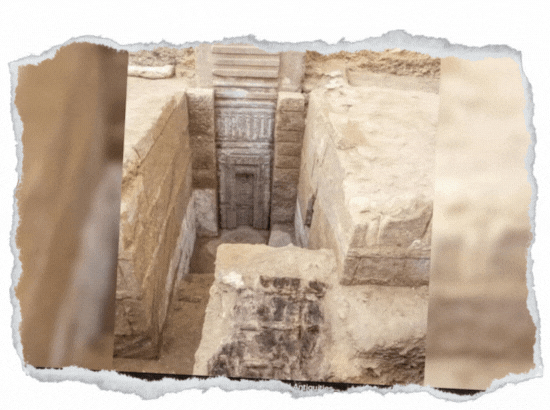
A joint team of archaeologists recently made a stunning discovery in Egypt’s Saqqara Necropolis. They found a 4,000-year-old tomb that contains a mysterious false door. The tomb belongs to Prince Woseribre, the son of King Userkaf from Egypt’s Fifth Dynasty.
This door, carved from pink granite, stands over 14 feet tall. Hieroglyphs on the surface list the prince’s titles and name. But the door leads nowhere. It’s a symbolic passage, not a real one. Experts say such false doors served as spiritual gateways. They allowed the dead to “receive” offerings and interact with the living world.
The excavation revealed several rare objects. The team uncovered 13 high-backed chairs, each featuring intricate carvings in pink granite. They also found a red granite offering table. It includes inscriptions describing ritual sacrifices.
Another remarkable find is a statue showing King Djoser, his queen, and their ten daughters. Experts believe this statue originally stood near Djoser’s Step Pyramid. Later, someone moved it to Woseribre’s tomb. The archaeologists also found a large black granite statue of a standing man. They believe it dates to Egypt’s 26th Dynasty.
The team found a second pink granite doorway at the site. This one displays the cartouche of King Neferirkare, another ruler from the Fifth Dynasty. These pink granite structures are unusual in the Saqqara region, making this discovery even more significant.
Researchers also discovered 13 statues of women close to the tomb. They think these may represent Prince Woseribre’s wives or other royal women.
Dr. Zahi Hawass, a leading archaeologist on the team, confirmed the investigation will continue. He and his team want to understand why statues of Djoser were placed in this tomb. They also hope to learn more about Woseribre’s role in the royal family.
This extraordinary find sheds light on ancient Egypt’s funeral practices. It also adds new depth to the history of Saqqara, one of Egypt’s most important archaeological sites.